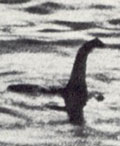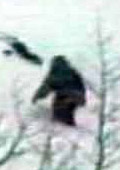Cryptozoology




The word cryptozoology is often attributed to Bernard Heuvelmans (1916-2001), a noted zoologist and past president of the International Society of Cryptozoology (the ISC, now defunct). However, in his book “In the Wake of Sea Serpents”, Heuvelmans credits the word to Scottish explorer Ivan T. Sanderson (1911-1973).
"When he [Sanderson] was still a student he invented the word 'cryptozoology', or the science of hidden animals, which I was to coin later, quite unaware that he had already done so."3
The animals researched in cryptozoology are often called cryptids, a word introduced by John E. Wall in a letter to the editor of the Summer 1983 issue of the Newsletter of The International Society of Cryptozoology.
According to cryptozoologist Loren Coleman, “Cryptids are in the most limited definition, either unknown species of animals or those that are thought to be extinct but which may have survived into modern times and await rediscovery by scientists.”3
Cryptozoology basically consists of two types of research:
- The search for animals that are believed to be extinct, either those found in fossils or those more recently no longer observed, such as the Australian Dodo Bird.
- The search for animals whose existence is undocumented by verifiable evidence, but whose existence is catalogued in myth, legend, and human assertion.1
In the first section of “Exotic Zoology”, Willy Ley hypothesizes that some of the cryptids of legend, such as the unicorn, might have been based on actual animal life.1
While most scientists agree that there are thousands of forms of animal life yet to be discovered, many remain skeptical of cryptozoological research, since much of cryptozoology is concerned with proving the existence of the larger and more famous cryptids such as the Loch Ness Monster (“Nessie”), the Yeti (aka “abominable snowman”), and the Big Foot (“Sasquatch”).
Classifying cryptozoology as a pseudoscience, mainstream scientists argue that the large cryptids (megafuana) would be unable to survive through time, giving the reason that survival in their reported habitats is unlikely because of climate conditions and food supply. Their reasons also include the belief that if cryptid populations were sufficient to support reproduction, there would be documented sightings.
Ancient myths and legends are rife with tales of encounters with cryptids of one type or another, and though undocumented, sightings of cryptids still occur today. Although most of us don’t expect to see a fire-breathing dragon in the skies, in 2001 there were three thunderbird sightings reported in Pennsylvania.5
In an October 2, 2005 New York Times article, Pulitzer Prize winning journalist William J. Broad wrote, "Monster lovers take heart. Scientists argue that so much of the planet remains unexplored that new surprises are sure to show up; if not legendary beasts like the Loch Ness monster or the dinosaur-like reptile Champ said to inhabit Lake Champlain, then animals that in their own way may be even stranger."6
When first sighted, many of the animals that are well documented and familiar today were believed to be hoaxes or hallucinations, among them, the Giant Panda, the Mountain Gorilla (pongo), the Platypus, and the Okapi.7
One problem with cryptozoology is that as the cryptids are either proven or disproven, they are no longer cryptids. The science, itself, may one day become extinct!
2.Philip R. “Pib” Burns. “Cryptozoology”. 30 March 2008. Pib’s Home on the Web. 2 April 2008. <http://www.pibburns.com/cryptozo.htm>
3.. Loren Coleman.”Cryptozoology FAQs”. 2008. The Cryptozoologist. 2 April 2008. <http://www.lorencoleman.com/cryptozoology_faq.html>
4. Douglas Harper. November 2001. Online Etymology Dictionary. <http://www.etymonline.com/index.php?search=crypto-zoology&searchmode=none>
5. “The Giant Thunderbird Returns”. 2008. About.com. The New York Times. 2 April 2008. <http://paranormal.about.com/library/weekly/aa100801a.htm>
6.William J. Broad. “One Legend Found, Many to Go.” 2 October 2005. The New York Times. 2 April 2008. <http://www.nytimes.com/2005/10/02/weekinreview/02broa.html?_r=1&oref=slogin>
7. Ellie Crystal. “Cryptozoology”. 2008. Crystalinks. 2 April 2008. <http://www.crystalinks.com/cryptozoology1.html>
